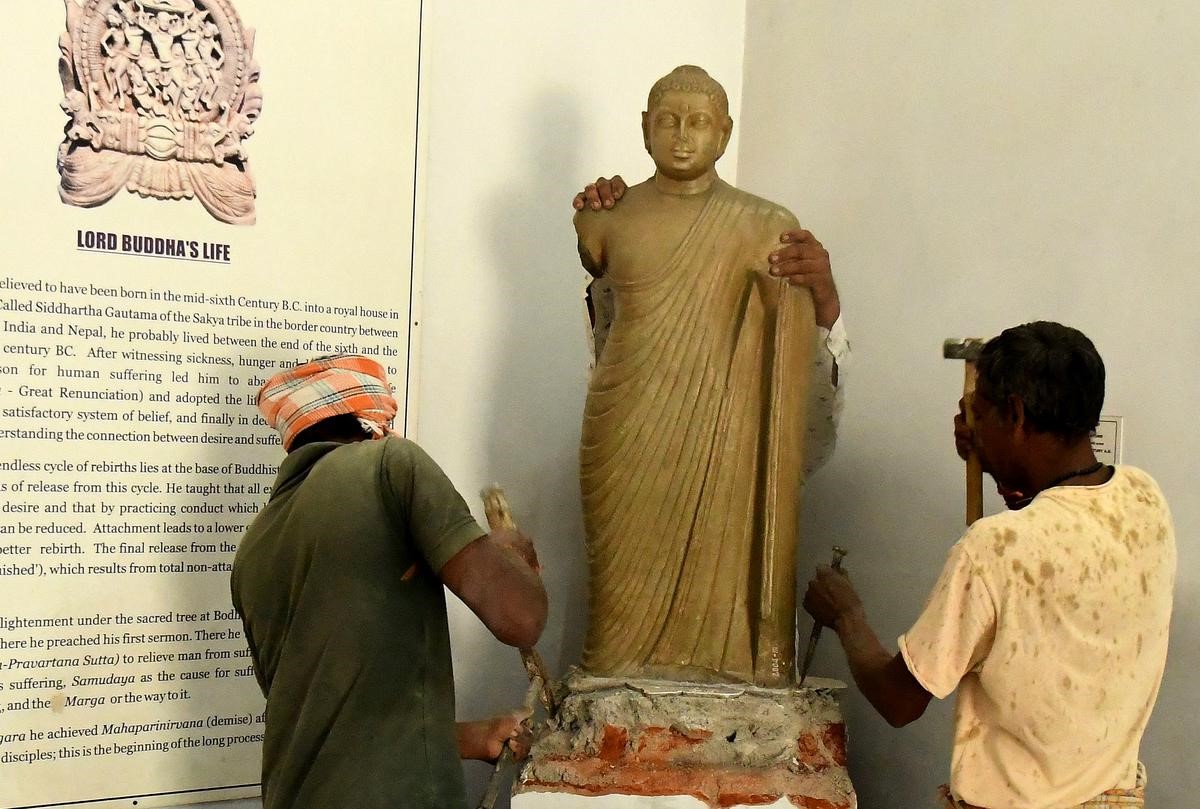Description

Disclaimer: Copyright infringement not intended.
Context
- The Phanigiri artefacts, dating from 200 BCE to 400 CE and discovered in 1942 in Telangana, India, are currently on display at the New York Metropolitan Museum of Art as part of the Tree and Serpent exhibition.
Details
Discovery and Importance
- The Phanigiri artefacts were initially discovered in 1942 and later rediscovered in 2003.
- The Phanigiri Buddhist site, located in Suryapet district, Telangana, is considered one of the most significant finds in Buddhist iconography in recent times.
- Phanigiri Gutta, where most of the discoveries related to early Buddhism were made, is considered a narrative-changing find. The artefacts provide insights into the evolution of Buddhism in the region during that period.

Historical Significance
- The artefacts include thoranas, which are arch-shaped gateways often seen in Buddhist art.
- The thoranas found at Phanigiri are among the first of their kind discovered south of Sanchi.
- They contain panels that depict both the Mahayana and Hinayana schools of thought, indicating the co-existence of these sects in Phanigiri.
Deification of Buddha
- Phanigiri artefacts also offer evidence of the deification of Buddha and mark a transition from a historical and spiritual identity to canonisation and ritual. This transition is significant in the history of Buddhism.
Buddha Carving
- One of the highlights of the Phanigiri find is a carving of the Buddha, wearing what appears to be a Roman toga with folds.
- This carving used to be displayed at the entrance of the Buddhist gallery at the State Museum in Hyderabad.
Return to India
- The artefacts from Phanigiri are scheduled to return to India by 2025.
- It is hoped that upon their return, they will be displayed more prominently and with better lighting in Hyderabad.

Conclusion
The Phanigiri artefacts provide valuable insights into the development of Buddhism in Southern India during ancient times and contribute to our understanding of the rich cultural heritage of the region. The exhibition in New York offers an opportunity for a global audience to appreciate these historically significant artefacts.
|
PRACTICE QUESTION
Q. What are "thoranas" in the context of Phanigiri artefacts?
a. Musical instruments used in ancient rituals
b. Arch-shaped gateways with religious significance
c. Carved statues of deities
d. Ancient coins used for trade
Answer: b)
|
https://www.thehindu.com/news/national/telangana/a-new-york-spotlight-for-buddhist-artefacts-from-telanganas-phanigiri/article67284828.ece
















